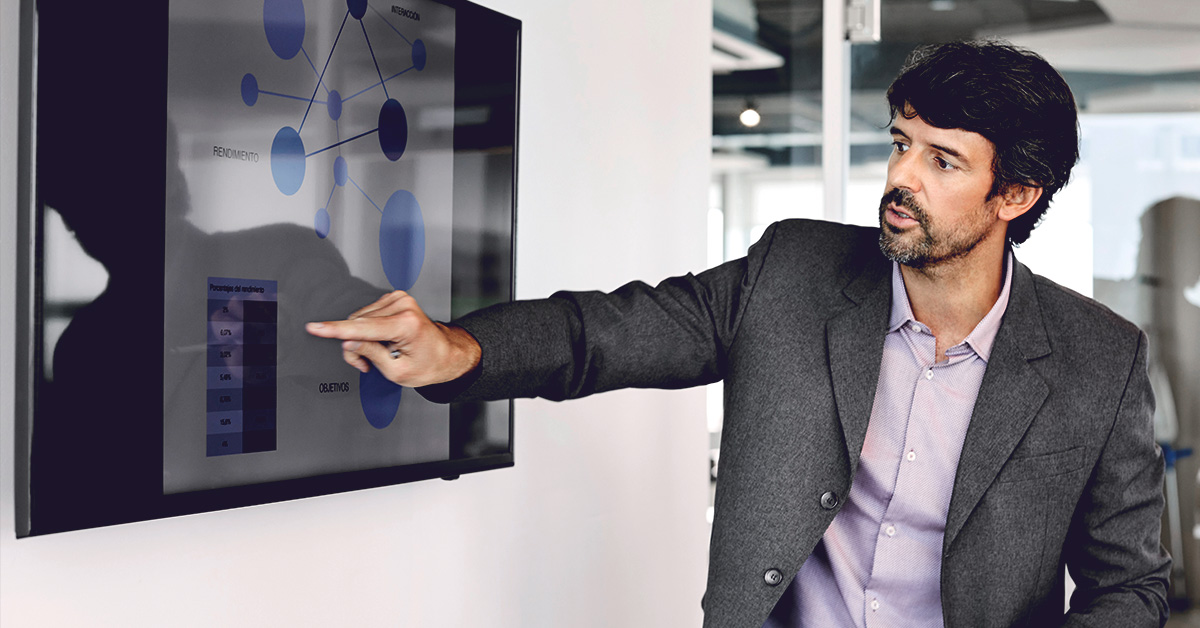As life sciences firms respond to the shifting realities of the COVID-19 crisis, they need to prepare for the long-term impact on the healthcare landscape. Many digital responses, such as telehealth, are likely to remain. Life sciences must adapt to and embrace these new digital realities across every aspect of their businesses, from R&D to commercial. The customer journey is broken and will be reimagined multiple times as we adapt to changing customer behavior during the crisis. Market conditions will be extremely volatile, varying greatly over time and by therapy area, locale and customer. In addition, the pandemic has compelled health systems to more strongly consider strategic partnerships with manufacturers. As a result, key account management and IDN partnership strategies will take a more prominent role. Therefore, as pharma rebounds and finds a new normal, it’s critical that life sciences CIOs and technology leaders push the boundaries on long-term technology imperatives (such as digital transformation, data, analytics and customer centricity) to position the business for future success.
We’ve put together a summary of long-term, technology-driven imperatives on which life sciences CIOs should increase their focus as they prepare for the new normal.
Modernize the data and technology foundation by ensuring flexible and scalable technology systems
To keep pace with the rapid evolution of business drivers in a post-COVID-19 world, life sciences CIOs and technology leaders need to implement a flexible architecture supported by modular platforms, enable data ubiquity and protect systems through advanced security. They should embody a data-first, cloud-first, global-first and experience-first mindset when modernizing their technology foundation.
- Consider constructs to move to a more flexible, modular architecture. Modular architectures consist of compact, self-contained, service-based components that are linked with easily configurable APIs. This accelerates time to market and facilitates quick responses to evolving business requirements, especially in times of crisis. Concepts such as containerization and micro services are being embraced by best-in-class IT organizations in the life sciences industry. In addition, as the focus on multi-cloud is only going to increase, applications’ architecture will also be expected to seamlessly support multiple cloud platforms.
- Prepare for real-time, data-driven decision-making. As historical data is likely to become less relevant in the post-COVID-19 world, technology leaders need to ensure that data analytics continue to drive decisions at scale and on a real-time basis. Alternatives may include accelerating the use of partial or incomplete data, as well as a wider variety of data such as text, audio, video and customer sentiment analysis rather than deep or voluminous (and more historical) data; harnessing relationships within data sets more effectively such as by leveraging graph techniques; and training AI models with newer techniques varying from reinforcement learning to continuous, embedded learning.
- Create an enterprise-wide data strategy to enable connected decisions across business functions. The COVID-19 crisis has underlined the value of cross-functional teams and decision making for a faster and more effective response to changing market needs. This is a great opportunity for life sciences CIOs to invest in enterprise data strategy and enable connected decisions. CIOs can provide a business interface for all the cross-functional stakeholders to share and democratize data at the enterprise level. While there will be sensitivities and nuances in sharing data across business units, data can be shared effectively through a business interface that allows data owners and business units to design and control certain aspects of data sharing, such as access and protocols.
- Set up the right practices and approach for security, data privacy and business continuity. Security and privacy considerations should be integrated within the solution development cycle, not after the conclusion of development. Supporting areas such as regulatory and compliance should be considered key requirements while data access is virtual.
- Propagate a re-skilling mindset to ensure that your organization quickly adapts to newer technologies and skills. Life sciences firms already are making organizational plans for approved digital technologies, allowing employees to make purposeful choices about which new skills they need to learn to improve their abilities and evolve. With uncertain times ahead, companies that adopt a re-skilling mindset will be more successful at integrating innovative technologies and agile ways of working because they’ll foster a culture of continuous learning.
To keep pace with the rapid evolution of business drivers in a post-COVID-19 world, life sciences CIOs and technology leaders need to implement a flexible architecture supported by modular platforms
CIOs and technology organizations need to embrace agility, improve service delivery with next-generation capabilities such as AI and automation and develop flexible technology partnerships with service providers.
- Embrace user- and product-centric delivery approaches. As life sciences firms reimagine customer experiences and journeys for a post-COVID-19 world, IT will play a critical role in enabling the newer experiences and will need to reinvent their delivery paradigm. For a long time, IT has focused on project-centric ways of working (such as ITIL and waterfall), which does not always align with digital and human design experiences. Adopting more user- and product-centric approaches such as agile delivery models, design thinking and continuous delivery will help IT become nimbler, more user- and business-oriented and deliver better service and experiences.
- Put automation and intelligence at the heart of technology delivery. While the current crisis, with its social distancing and isolation, might have triggered renewed focus on automation and intelligence, the investments here will create a lasting advantage for firms, not only in delivering savings but also creating room for ongoing innovation. In life sciences, we are already seeing the increased demand for intelligent data management, augmented analytics and cognitive RPA (intelligent robotic process automation), as well as a focus on hyper-automation that leverages DevOps teams for now, with the goal of eventually reaching NoOps (no operations) models.
- Focus on building talent and strategic service provider partnerships. CIOs and technology leaders need to reinforce the importance of hiring top talent and equip them with successful growth paths and re-skilling opportunities. In addition, they should look for innovative models to collaborate with service partners. For example, companies can partner with strategic providers to not only deliver the technology product but also enrich their in-house people skills during the process and continue to foster innovation as a key service expectation.
Envisage the role of technology as a business and innovation partner
Life sciences CIOs can establish IT as a value creation partner to enable business in pursuing transformations by reimagining the use of data, analytics and digital technology as a key differentiator.
- Reimagine the technology service and operating model. While IT has historically worked in a shared service model to optimize the cost, other models are now being considered depending upon the anticipated value for business. These can vary from integrating many of the domain-dependent, non-commoditized IT services within lines of business to design a product or platform-centric model that ensures the tight coupling of business and IT into the product life cycle. A product or platform-centric model has been a huge success in other industries such as financial services and can help technology organizations within life sciences improve the consistency of the business experience.
- Enable data and digital monetization for business value beyond operation excellence and decision-making. During the COVID-19 crisis, digital technologies have been thrust into the limelight and are expected to have a long-term impact on customer engagement and other pharma operations. As firms accelerate their digital investments, CIOs and technology leaders should aspire to create digital products and services that can either have tangible impact on health outcomes or enable direct monetization. Examples may include solutions focused on optimizing the patient or healthcare provider experience (improving loyalty and trust, thus impacting revenues) or truly transformational digital therapies.
- Track the business value of technology investments and rebalance accordingly. Technology investments usually tend to deliver value only implicitly, which leaves them prone to scrutiny. If IT aspires to become a value driver and to establish a seat on board, it’s critical to devise shared objectives and goals to link technology investments to business value—both the value derived from selling new tech-enabled products and services (such as digital therapies), and value gained in the form of operational efficiencies from embedding technologies into business processes.
Many CIOs are already playing a key role in navigating the COVID-19 crisis. After the first emergency response, there is a tremendous opportunity to shape the path of life sciences companies’ reinvention coming out of the COVID-19 crisis. From managing the initial implications of the disruption, to preparing for and managing through the downturn during the “business unusual” phase, to positioning the business for future success once the recovery happens, CIOs now can change the role of IT from merely a support function to business partner and value creator.














